Bayberry is a cozy, fragrant herb that sings to us of Christmas but it holds healing benefits for us year-round, in its leaves, roots, bark, and berries. Learn how to use bayberry for its warming, drying, and astringent qualities in salves, tinctures, and tea.
Bayberry
Bayberry (Myrica spp) is one of the iconic scents of Christmas, along with pine, fir, oranges, and chocolate. The scent of bayberry is mild and fresh with a hint of spice. The warm, spicy scent is found in the leaves and the berries. Many bayberry species have aromatic berries that are coated in wax. The wax is rendered from the berries and has a faint fragrance. It takes 5 to 8 pounds of berries to make 1 pound of wax, so bayberry wax is a treasure. Bayberry wax is brittle with a low melting point. It has some health benefits when used in salves and creams. Bayberry root is a key ingredient in eye washes because of its astringency. In fact, the leaves, berries, bark, and roots of Bayberry shrubs can be used in herbal remedies.
Using Bayberry for Herbal Remedies
Bayberries shrubs, Morella or Myrica species grow wild on the East coast of North America from New Brunswick, south into the Carolinas. In California and up the West Coast you’ll find the Western race of myrica species including California Wax Myrtle and Sweet Gale. In Hawaii a tropical variety of Myrica grows in the young lava fields left by volcanos, called fire bush, it is an invasive species. The bushes grow well in windy areas along the coast line, where they are exposed to salt spray and harsh winds. Being nitrogen fixers, they are adaptable to a wide variety of soil conditions, preferring semi-shade but also thriving in full sun.

Bayberries make a good addition to the hedgerow, where their abundant berries and fragrant leaves are attractive to song birds, shore birds, and waterfowl. The berries persist on the plants throughout the winter and can be harvested anytime from mid-autumn to snow. The leaves are semi-evergreen.
Morella cerifera is the plant of the herbal pharmacopeia; however, harvesting local plants of any of the Morella or myrica species will give you a more potent medicine than purchasing the plants of commerce. Michael Moore in Medicinal Plants of the Pacific West (Museum of New Mexico Press, 1993) says that dried leaves will retain their aromatic properties for 18 months, while bark and wood will be good for at least a year.
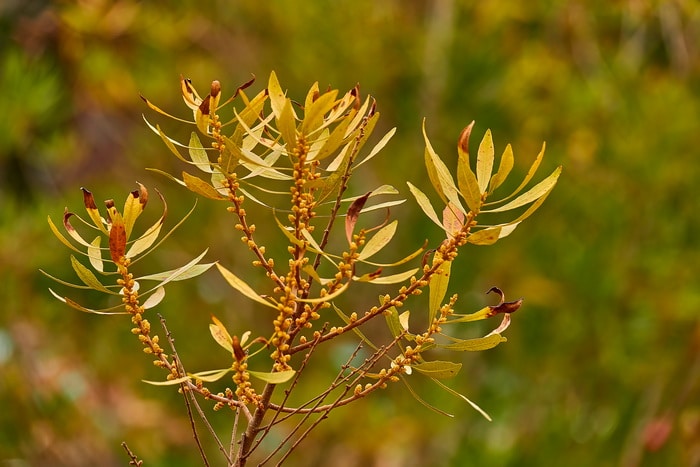
Parts used:
The Leaves, wax from the berries, bark, roots are used for medicine.
Collect the leaves in spring or early summer, the root bark, wood bark, and root wood in late summer and fall. Collect the berries when they are fully ripe in Mid-autumn. You’ll need a lot of berries to make wax.
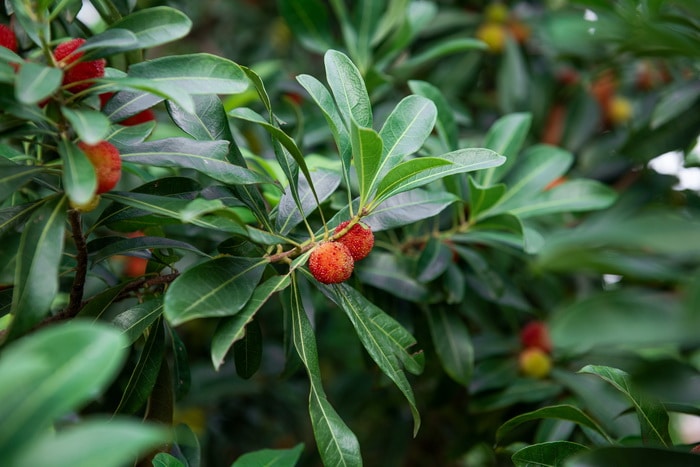
Chinese bayberry
Constituents:
Bayberry has several constituents that offer therapeutic benefits including terpenes, resins, and flavonoids.
Myricinic acid (an astringent resin), myricitin, triterpenes (The main substance are alpha-pinene, 1,8 cineol, myrcene and limonene. Additional substances found in the plant are beta-cadin-4-En-10-ol, 11-selina-4-ol, beta-terpinene, p-cymene, caryophyllene, 4.11-selinadien, beta-elemennon, germacrone ), myricic acid, tannic acid, mallic acid, gallic acid, and volatile oils.
Bayberry wax contains esters of palmitic, myristic and lauric acid, as well as tannins and essential oils. It is antimicrobial, moisturizing, and soothing. It is useful for salves and balms, soaps, and candles. Bayberry wax is considered a vegan substitute for beeswax, as well as a local substitute for imported cocoa butter or shea butter.

Sweet gale
Energy:
Bayberry is a warming, drying herb.

Actions:
Bayberry has several actions that contribute to its therapeutic benefits. First and foremost it is astringent and tightening of lose tissue. It is lymphatic, vasodilating, tightening, astringent, anti-fungal, antimicrobial, anti-oxidant, diaphoretic, nervine, wound healer, fevers, tonic, warming, stimulant, expectorant, carminative, immunostimulant, emetic (in large doses), styptic, detoxifier, diuretic, anti-parasitic, anti-viral, antidepressant, increases libido, and it supports the liver.
Bayberry is used for colds, flus, fevers, healing and tightening to gums and hemorrhoids. It is used for diarrhea, excessive menstrual bleeding, hemorrhage of the bowels, lungs, and uterus. A poultice made of the leaves relieves varicose veins. A decoction made with the dried bark relieves itching. It is traditionally used to expel worms.
- It is used in the treatment of acne for its antimicrobial and astringent actions.
- The leaf tea can bring lucid dreams.
- The leaves repel mosquitoes, midges, and biting insects.
- The wax is moisturizing, soothing, antimicrobial, and emollient.
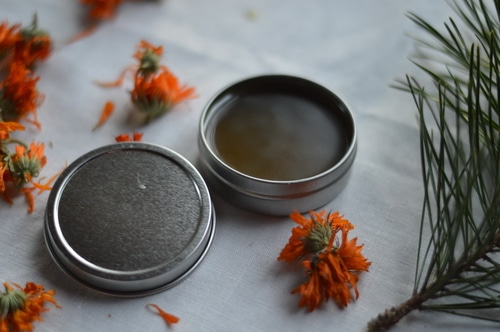
Dosage:
Fresh root tincture 1:2, dried root tincture 1:5, dose: 20 to 60 drops, 3 times daily.
Root or bark tea or decoction ½ to 1 tsp. in a cup of hot water, slipped slowly, 3 to 4 times a day.
Leaf tea ½ to 1 tsp. in a cup of hot water, offers a pleasant after taste that is both spicy and tart. Vasodilatiing and warming.
Cautions:
Avoid internal use of Myrica sp. if pregnant or breast feeding. It is considered an abortifacient. It may cause skin irritation in some people. The essential oil is toxic and should not be taken internally.
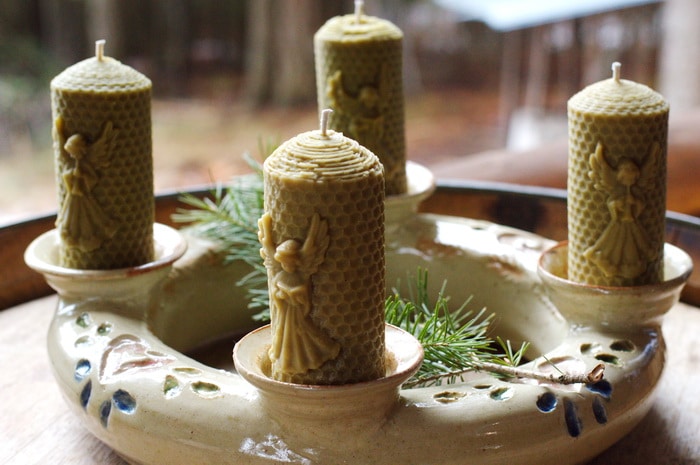
Other uses:
The leaves of bayberry are used as a spice to flavor soup stocks, teas, and cordials, much in the same way as bay leaf, its more popular cousin.
The leaves dye wool and cotton yellow. The camphor scent repels moths in woolen and linen textiles. The aromatic leaves were used to flavour beer as a bitter in the place of hops. Today it is used to flavour liqueurs and digestives.
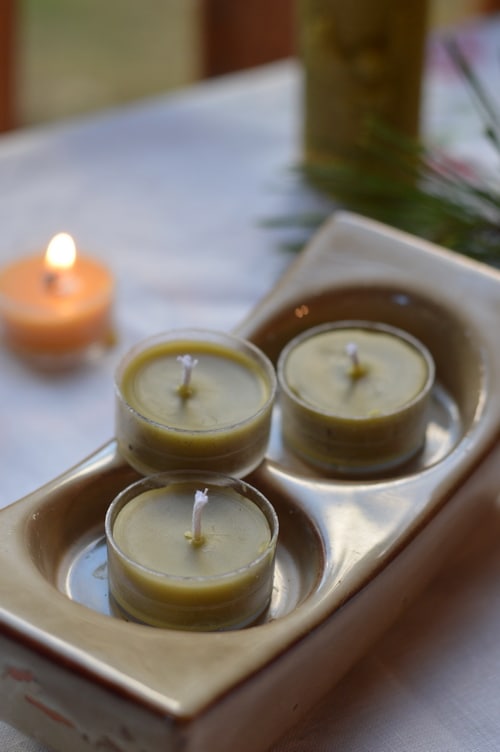
The bayberry tree is said to impart good luck and prosperity to the house next to which it is planted. Many rituals involving good luck have revolved around the bayberry tree. For instance, it is thought that if you burn a bayberry candle on Christmas Eve you will have good luck the following year, or if you carry a piece of the bark or berries around in a small satchel, or a dry leaf in your wallet, it will attract money.
Here’s some ways to use bayberry
Learn how to grow Bayberries, Sweet Gale, and Wax Myrtles (coming soon)
Make DiY Bayberry Votive Candles
Recipe for DiY Bayberry and Hemp Beard Balm




can I make essential oil with the leaves?
Yes, its a Myrica pensylvanica, so it works.
Hello!
This looks awesome! I am interested in landscaping my new house’s large yard with useful and/or edible plants. However, I am zone 6b, and I cannot grow the exact variety listed in your post. Would this one still work for candles and herbal remedies: Audubon® Northern Bayberry (Myrica pensylvanica)?
Thanks so much!